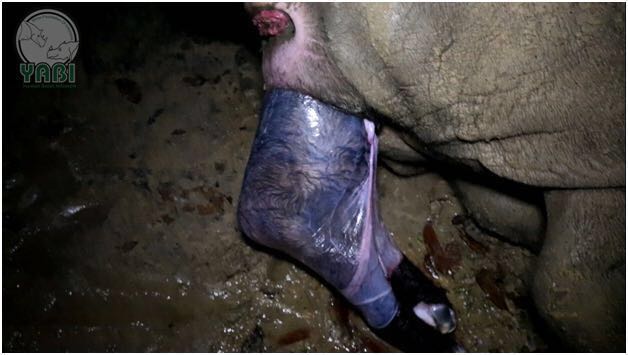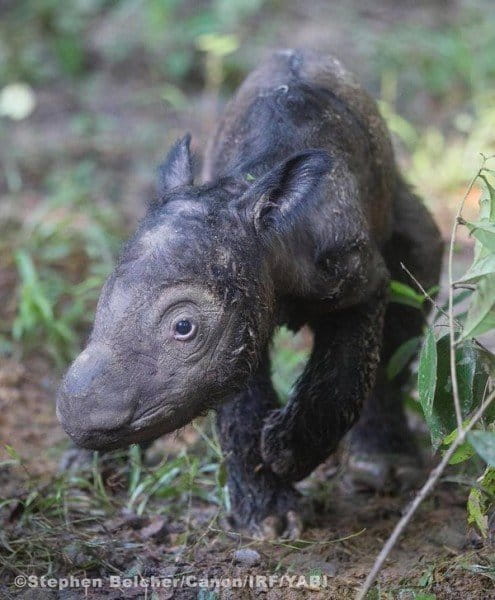- The father, Andalas, was born in captivity in the Cincinnati Zoo before being transferred to Indonesia.
- An uncle, Harapan, was the last Sumatran rhino in the Western hemisphere before following his brother to Indonesia earlier this year.
- The mother, Ratu, has now given birth twice, raising the population of Indonesia’s Sumatran Rhino Sanctuary to seven.
The fate of an imperiled species shined a little brighter on Thursday, when Ratu the Sumatran rhinoceros gave birth to her second calf at a captive breeding center in Indonesia.
The birth of the female, who has yet to receive a name, brings the population of the Sumatran Rhino Sanctuary in the archipelago’s Way Kambas National Park to seven. Fewer than 100 of the critically endangered species (Dicerorhinus sumatrensis) are thought to remain in the wild.
The calf is the second child of Ratu and Andalas, a male rhino who became the first of his kind to go from being born in captivity to becoming a successful breeder when their first child, Andatu, was born in 2012. Andalas came into the world at the Cincinnati Zoo in the United States in 2001, and was later transferred to Indonesia.
Earlier this year, Andalas’ younger brother, Harapan — the name means “hope” in Indonesian — was also transferred to the sanctuary from Cincinnati. It is hoped that the mature Harapan will mate with one of the other two females at Way Kambas, Rosa and Bina.
For now, Harapan will have to settle for a niece.
“We are still waiting for Madame Environment Minister [Siti Nurbaya] or President Jokowi to give a name to this baby,” Indonesia Rhino Foundation (YABI) program manager Haerudin R. Sadjudin told Mongabay.

The odds are great, but conservationists believe they can restore the species, now scattered among Sumatra’s last rainforests, which are being squeezed by the rapid expansion of oil palm and pulpwood plantations to feed global markets. A small group also remains in Kalimantan, the Indonesian part of Borneo.
Asked by the New York Times in 2001 whether it was possible to bring the Sumatran rhino back from the brink of extinction, Dr. Terri Roth, the principal architect of Andalas and Harapan’s births at the Cincinnati Zoo, replied, “Absolutely. And there are examples of other species that dwindled down to close to 20 animals and they were brought back. If you look at the bison, the black-footed ferret, the Arabian oryx, even the Wyoming toad, they’ve come back.”
“Her response is as relevant today as it was in 2001,” biologist Francesco Nardelli wrote in a recent op-ed for Mongabay.





Citations:
Rahmadi Rahmad. “Bahagianya Ratu yang Kini Memiliki Bayi Badak Betina.” Mongabay-Indonesia. 12 May 2016.